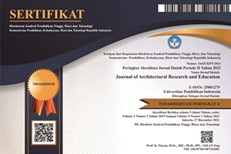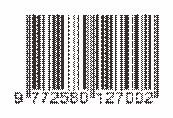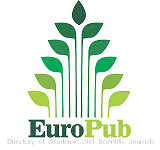COVID-19 DISSEMINATION ASSESSMENT THROUGH NATURAL VENTILATION IN HOSPITAL PATIENT ROOM BY CFD ANALYSIS
Abstract
This paper studies the effect of natural ventilation on the spread of the COVID-19 virus from a patient room to an adjacent room with the help of airflow. The importance of this study is since COVID-19 virus contamination can easily transfer with the airflow from one room to the next room or adjacent corridor. This paper aims to determine the effect of natural ventilation on the contamination of the spaces next to the COVID-19 patients’ room.
For this evaluation, we have used mechanical modelling and CFD simulation to evaluate the effect of natural ventilation on the transmission of COVID-19 with the airflow from a contaminated space to a clean space. During this study, we have calibrated the CFD model using one actual case, that was studied in a wind tunnel, and verified the modified model with the actual existing case. The simulated CFD model showed a reasonable accuracy for the prediction of ventilation in indoor spaces.
Results showing the room geometries with air inlet/outlet that positioned at either bottom or top of the room will result in less COVID contamination dissemination through natural ventilation. In addition, in case of having the inlet/outlet in middle and positioning face to face and as well in the case of having max natural air velocity, the maximum contamination will exhaust from the space.
Full Text:
PDFReferences
Granich, R., Binkin, N. J., Jarvis, W. R., Simone, P. M., Rieder, H. L., Espinal, M. A., ... & World Health Organization. (1999). Guidelines for the prevention of tuberculosis in health care facilities in resource-limited settings (No. WHO/CDS/TB/99.269). World Health Organization.
Escombe, A. R., Oeser, C. C., Gilman, R. H., Navincopa, M., Ticona, E., Pan, W., ... & Evans, C. A. (2007). Natural ventilation for the prevention of airborne contagion. PLoS Med, 4(2), e68.
Liu, Y., Ning, Z., Chen, Y., Guo, M., Liu, Y., Gali, N. K., ... & Lan, K. (2020). Aerodynamic analysis of SARS-CoV-2 in two Wuhan hospitals. Nature, 582(7813), 557-560.
Asadi, S., Bouvier, N., Wexler, A. S., & Ristenpart, W. D. (2020). The coronavirus pandemic and aerosols: Does COVID-19 transmit via expiratory particles?.
Van Doremalen, N., Bushmaker, T., Morris, D. H., Holbrook, M. G., Gamble, A., Williamson, B. N., ... & Munster, V. J. (2020). Aerosol and surface stability of SARS-CoV-2 as compared with SARS-CoV-1. New England Journal of Medicine, 382(16), 1564-1567.
Offord C. How COVID-19 is spread. The Scientist https://www. the-scientist. com/news-opinion/how-covid-19-is-spread-67143 (21 February 2020). 2020.
Wood, A., & Salib, R. (2013). Natural ventilation in high-rise office buildings, CTBUH technical guides. New York and London: Routledge.
Zhai, Z. J., El Mankibi, M., & Zoubir, A. (2015). Review of natural ventilation models. Energy Procedia, 78, 2700-2705.
Emmerich, S. J., Dols, W. S., & Axley, J. W. (2001). Natural ventilation review and plan for design and analysis tools (pp. 1-56). US Department of Commerce, Technology Administration, National Institute of Standards and Technology.
Irving, S., & Clements-Croome, D. J. (2005). Natural ventilation in non-domestic buildings. Chartered Institution of Building Services Engineers.
Chenari, B., Carrilho, J. D., & da Silva, M. G. (2016). Towards sustainable, energy-efficient and healthy ventilation strategies in buildings: A review. Renewable and Sustainable Energy Reviews, 59, 1426-1447.
Cao, G., Awbi, H., Yao, R., Fan, Y., Sirén, K., Kosonen, R., & Zhang, J. J. (2014). A review of the performance of different ventilation and airflow distribution systems in buildings. Building and Environment, 73, 171-186.
Christian, M. D., Loutfy, M., McDonald, L. C., Martinez, K. F., Ofner, M., Wong, T., ... & SARS Investigation Team. (2004). Possible SARS coronavirus transmission during cardiopulmonary resuscitation. Emerging infectious diseases, 10(2), 287.
Behne, M. (1999). Indoor air quality in rooms with cooled ceilings.: Mixing ventilation or rather displacement ventilation?. Energy and Buildings, 30(2), 155-166.
Skistad, H., Mundt, E., Nielsen, P. V., Hagström, K., & Railio, J. (2002). Displacement ventilation in non-industrial premises. REHVA Guidebook no. 1. ISBN 82-594-239-3.
Tominaga, Y., & Blocken, B. (2015). Wind tunnel experiments on cross-ventilation flow of a generic building with contaminant dispersion in unsheltered and sheltered conditions. Building and Environment, 92, 452-461.
Ramponi, R., & Blocken, B. (2012). CFD simulation of cross-ventilation for a generic isolated building: impact of computational parameters. Building and Environment, 53, 34-48.
Yan, Y., Li, X., & Ito, K. (2020). Numerical investigation of indoor particulate contaminant transport using the Eulerian-Eulerian and Eulerian-Lagrangian two-phase flow models. Experimental and Computational Multiphase Flow, 2(1), 31-40.
van Hooff, T., Blocken, B., & Tominaga, Y. (2017). On the accuracy of CFD simulations of cross-ventilation flows for a generic isolated building: comparison of RANS, LES and experiments. Building and Environment, 114, 148-165.
Mahdavinejad, M., Ghasempoorabadi, M., & Javanrudi, K. (2013). Numerical Modeling and Experimental Study of Air Flow in theYazdi Wind-Towers. University of science and technology of Iran, 23(1), 17-22.
Mahdavinejad, M., Javanroodi, K., Ghasempoorabadi, M. H., & Bemanian, M. (2013). Evaluating the efficiency of YAZDI wind tower, an experimental study. Int. J. Archit. Eng. Urban Plan., 23(1), 17-22.
DOI: https://doi.org/10.17509/jare.v3i1.31309
Refbacks
- There are currently no refbacks.
Copyright (c) 2021 mohammadhossein ghasempourabadi, Hossein Hassanzadeh, Shaghayegh Shahrigharahkoshan, masoume taraz

This work is licensed under a Creative Commons Attribution-NonCommercial-ShareAlike 4.0 International License.

This work is licensed under a Creative Commons Attribution-ShareAlike 4.0 International License.








